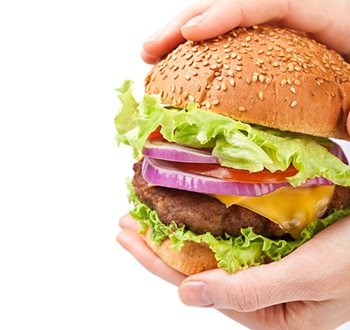Are You Serving Up Plain or Gourmet Content?
By Laura Myers
February 5, 2019
B2B Content Marketing, content, Content Journey as a Service, content marketing, Content Strategy, digital content, Digital Marketing, marketing, marketing campaign, Video Marketing
In 2017, it was determined that 84% of people expect brands to offer a steady supply of content to  entertain, delight, offer solutions, and create an overall memorable experience. For brands, staying up to the task can be difficult when it comes to the amount of time and resources it takes to deliver on those content demands— not just with quantity, but with quality.
entertain, delight, offer solutions, and create an overall memorable experience. For brands, staying up to the task can be difficult when it comes to the amount of time and resources it takes to deliver on those content demands— not just with quantity, but with quality.
The easy part is defining the intended message within a content campaign—the meat of the initiative. The harder part is dressing that message up in a variety of unique ways to appeal to various consumers with differing tastes. That’s where content goes from plain, to gourmet. You could almost use the analogy of a trend that has hit the food scene hard in the last few years; the influx of chefs from all over the world who took a simple food, the burger, and elevated it to a gourmet offering.
In order to do the same for your content, you have to go through a similar process of sourcing a high-quality message. Prepare the ingredients that will match that quality and appeal to a variety of consumers, and serve it up to not only satiate their hunger, but increase the likelihood their cravings for your content will keep them coming back.
Source Your High Quality Ingredients
For gourmet chefs, high quality ingredients don’t just appear out of nowhere. There is a lot of time that  goes in to researching suppliers, tracing the food items back to their source, and checking that all of the quality standards are in place to guarantee they are starting with the best ingredients. The same goes for your content marketing campaigns.
goes in to researching suppliers, tracing the food items back to their source, and checking that all of the quality standards are in place to guarantee they are starting with the best ingredients. The same goes for your content marketing campaigns.
The research begins with understanding: what are the messages of value you want to convey to your customers? Is it your company story? Is it content surrounding a topic you believe your executives are thought-leaders on? Is it to share the exciting announcements of a new feature, service, or upgrade? When you’re grinding out the details that will become the meat of the campaign, you want to make sure the level of quality starts there.
It is also imporant to consider that you’re never going to see a waygu beef burger served on a dry, cardboard-like bun, a cheap, processed cheese slice, and a soggy tomato. The same goes for your content. You don’t want to take your high quality messaging and toss it out in a haphazard, irrelevant, boring content campaign. Every piece of your content campaign has to be well-crafted and orchestrated.
You want to look to your customers to give you clues as to what to wrap around that message to ensure they will be enticed to consume it. With burgers, there are common toppings that appeal to the masses: lettuce, cheese, tomatoes, pickles, mustard, ketchup, onions, etc.. Content is no different. There are things you can add to your content marketing initiative that will ensure at least some engagement. An entertaining video, a punchy survey, or an informative blog post. Still, as much as you want your message to be of high quality, what you add to it needs to be of equal—if not higher—value and quality.
How to Determine Your Toppings
For marketing teams, understanding the manner in which to deliver a message is where research and analytics come in handy. Just like a chef can determine which toppings will be more popular with a certain demographic of burger fans based on food trends, marketers can figure out what to add to their content campaign journey based on consumption trends. Some notable changes in 2019 are:
- Email demands finesse: In 2017, an Adobe survey said people were spending 27% less time checking their email than in the previous year. Email still works to some degree, but as a consumer myself, my inbox is bombarded with emails from brands. It seems everyone heard email worked and ran with it, and for good reason. In 2017, email offered the best ROI of any marketing channel. If you want yours to stand out, think less frequent, offer higher value, and add a well-thought out subject line to gain attention amongst the clutter.
- You need to understand generations: Now, more than ever, it’s important to understand consumption habits of people based on their generation, as we’ve discussed previously on CMSC Media. A lot of B2B marketers might overlook this and think it’s only relevant in B2C, but they would be wrong. Discounting it could be detrimental. After all, we’re a startup culture, which means executives with purchasing power aren’t all baby boomers. In addition, digital savvy is becoming more ubiquitous across age groups and demographics. Older generations are adopting technology too, so you can't discount the notion that digital-forward campaigns wouldn't be engaging to them.
- Devices and distribution are changing the game: Gone are the days where it was enough to serve up content on web, mobile, and social. We are all now riding the wave of IoT, voice, etc., and for marketers, that blows the door wide open on where and how your content can be served up and consumed by your audience. Think more about their daily interaction with various devices and craft your content based on where your brand could fit, versus crafting your content and seeing which device it might work with.
- Consumers want a journey: Aligning with the premise of this article, content can’t be one-offs. You can’t serve a burger with just a slice of tomato, or charge extra for the bun. The best way to get your message across is to create a content journey. It’s nice to think you could convert a customer with one piece of content, but it goes against much of what we now know. In 2015, Salesforce shared that it takes anywhere from six to eight touchpoints to generate a viable sales lead. Given that the dynamics of the attention economy have become even more strenuous in the last three years, I assume that number is inching even higher.
Ending Notes
In addition to understanding consumption habits, marketers also need to know the best way to convey a message. When is an eBook better than a blog post? Where can a webinar be leveraged to optimize the lead-generation a short-form video would’ve left on the table? Is third-party content necessary, or would a case-study have more impact? Just as the ideation of content campaigns need investment and strategy, so does the decision on which types of content should be used.
To truly get to the gourmet stage, you have to take some risks. It’s a bold move for a chef to top a burger with foie gras then slap on a price tag that is five times more than what a customer would pay for a burger anywhere else. The value—and what the customer would pay for—is in the depth of the experience. It’s an investment for that chef to create such an offering, but those who choose it from amongst a vast sea of other lower cost items are customers that are all-in on consumption. If you’re out there taking risks and investing the time and resources to create a gastronomic-level content journey for your potential consumers, those who you draw in might just have that increased intent to purchase, or at the very least, a higher level of engagement with your brand.

Laura Myers
A digital business, marketing and social media enthusiast, Laura thrives on asking unique, insightful questions to ignite conversation. At an event or remotely, she enjoys any opportunity to connect with like-minded people in the industry.